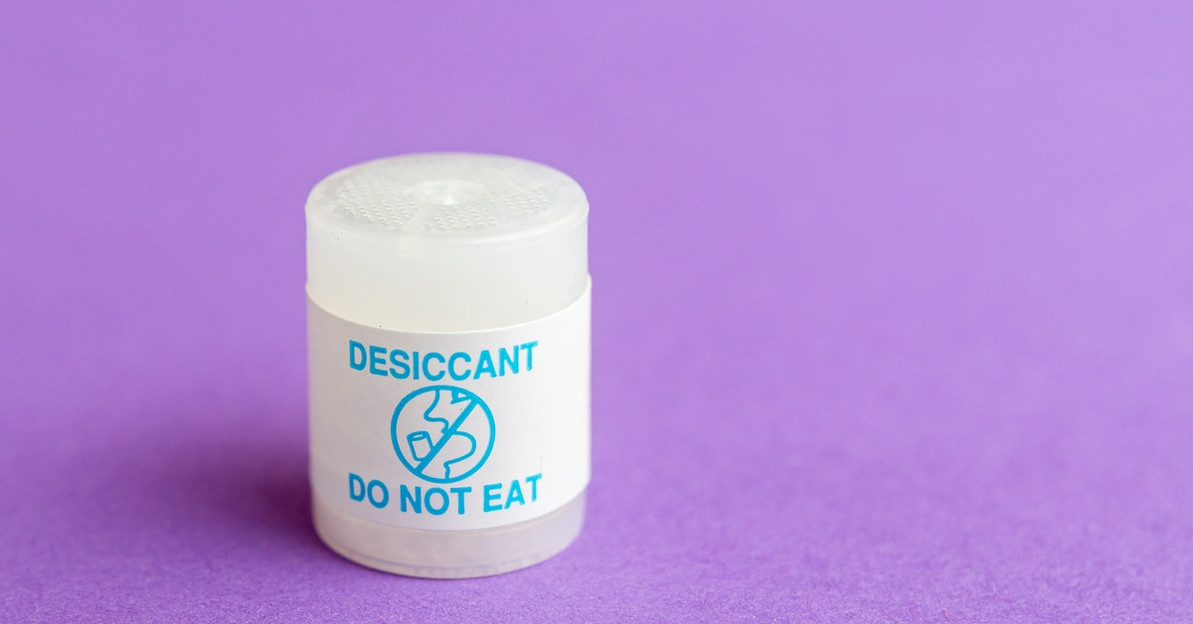The Role of Desiccants in Protecting Hygroscopic Chemicals
Hygroscopic chemicals readily absorb moisture from the surrounding environment, leading to compromised quality and reduced efficacy. To mitigate this risk, using desiccants is an essential practice in ensuring the stability and longevity of such materials.
Desiccants are highly effective at maintaining optimal storage conditions by controlling humidity levels and preventing unwanted chemical reactions. In this post, explore how desiccants protect hygroscopic chemicals and their many applications in various industries.
Introduction to Hygroscopic Chemicals
Hygroscopic chemicals are materials that naturally absorb moisture from their surroundings. Due to their chemical composition, these substances have an inherent tendency to bond with water molecules in the air. While this property is advantageous in certain applications, it introduces challenges for chemical storage and handling.
Some common examples of hygroscopic chemicals are salts, certain polymers, sugars, and acids used in pharmaceuticals, food manufacturing, and chemical engineering. Hygroscopic materials are essential in numerous processes, from the formulation of lifesaving drugs to advanced research in analytical testing laboratories.
Understanding the Threats of Moisture Exposure
Even at a micro level, moisture intrusion wreaks havoc on hygroscopic chemicals. Relative humidity in the air leads to chemical degradation, caking, clumping, or even unwanted chemical reactions. For example, sodium chloride, a common hygroscopic compound, becomes sticky or lumpy when exposed to humidity, making it challenging to measure or use in precision applications.
Beyond physical alterations, moisture chemically alters the composition of hygroscopic materials. Such changes could reduce the efficacy of pharmaceuticals, compromise food safety standards, or render a chemical unsuitable for its intended use. For businesses that rely on these materials, such failures introduce risks to safety, regulatory compliance, and cost efficiency.
What Are Desiccants?
Desiccants are specialized materials designed to minimize the effects of moisture exposure by actively absorbing and trapping water from the surrounding environment. Their role is vital in creating a controlled space where hygroscopic chemicals retain their desired properties despite external conditions.
The effectiveness of desiccants lies in their unique structure and properties. Materials like silica gel and activated alumina have high porosity, allowing them to capture and hold high amounts of moisture. Used correctly, desiccants protect against humidity, maintaining the quality and stability of the substances they protect.
Types of Desiccants
Different desiccant materials offer varying moisture absorption capabilities, catering to diverse industrial requirements. Silica gel is popular for its reliability and versatility. Its nontoxic, renewable nature makes it suitable across industries, from food packaging to pharmaceuticals.
Molecular sieves, in contrast, provide superior performance in low-humidity environments, making them ideal for situations requiring highly precise moisture control. Calcium chloride stands out for its exceptional moisture absorption rate, but it can become liquid when saturated, requiring careful packaging.
Meanwhile, activated alumina is preferred for gas drying applications. While traditional desiccants dominate the landscape, emerging materials like biopolymer-based desiccants demonstrate the increasing focus on sustainability and innovation.

Mechanism of Moisture Absorption
Desiccant effectiveness stems from two key processes: physical adsorption and chemical absorption. Physical adsorption relies on the desiccant’s porous surface to attract and hold moisture, while chemical absorption involves a chemical reaction that binds moisture to the material.
The efficiency of these mechanisms depends on environmental conditions such as temperature, humidity levels, and contact time with air. For instance, silica gel outperforms in moderate humidity ranges, whereas molecular sieves excel under low-humidity scenarios. Understanding these dynamics enables more strategic decisions when incorporating desiccants into storage protocols.
Desiccant Packaging Options
Proper packaging enhances desiccant performance and aligns with specific industrial needs. Sachets and packets are common in pharmaceuticals or food packaging due to their compact size and ease of integration into product containers. Similarly, canisters provide a durable option for larger-scale applications, while bulk desiccants serve industries requiring substantial quantities for manufacturing or transport purposes.
Innovations in specialty solutions offer tailored moisture control for unique challenges, such as desiccants embedded directly into equipment or packaging. These custom-designed solutions enhance protection without hindering operational efficiency, ensuring maximum workflow compatibility.
Critical Considerations When Selecting a Desiccant
Choosing the right desiccant requires evaluating several factors beyond just moisture absorption capacity. Compatibility with the protected chemical is paramount, as certain desiccants may react negatively with specific substances. Environmental conditions, including relative humidity and temperature, also shape the choice of desiccant material.
Additionally, deployment methods and packaging influence the overall strategy. For instance, bulk desiccants may be suitable for large-scale operations, while precision industries may require premeasured sachets or specialty designs. These considerations ensure that the desiccant solution aligns seamlessly with operational requirements.
Applications Across Industries
Desiccants are indispensable in various industries. The pharmaceutical sector relies on them to maintain the stability of drug formulations by preventing degradation due to moisture. Food packaging also benefits from desiccants for preserving freshness and reducing spoilage, while electronics manufacturers leverage them to protect sensitive components from humidity-induced corrosion or short circuits.
Laboratories, particularly those using sample prep products, depend heavily on desiccants to maintain accurate measurements and consistency in testing protocols. Even in niche chemical manufacturing, desiccants are crucial for quality assurance during storage and transport. These diverse applications underline their universal importance in maintaining product integrity and operational efficiency.

Monitoring Desiccant Performance
For optimal, sustainable impact, it’s essential to assess the performance of desiccants regularly. Tools like humidity indicators make it easy to evaluate desiccant activity, signaling saturation levels before issues occur. Replacing or regenerating used desiccants is equally crucial in maintaining consistent moisture control.
Industries with demanding quality standards often pair desiccants with advanced humidity monitoring systems to achieve precise control over storage environments. Such tools provide actionable insights, enabling businesses to intervene proactively when necessary.
Advancements in Desiccant Technology
Innovation continues to shape the desiccant landscape, with emerging materials and technologies driving performance enhancements. Advancements in smart desiccant systems, which integrate humidity indicators directly into packaging, have gained traction in industries where precision is paramount.
Meanwhile, sustainable solutions, such as biopolymer-based alternatives, have transformed environmental considerations within the sector. These breakthroughs signal a promising future for desiccant technology, emphasizing efficiency and sustainability as core drivers of progress.
Common Missteps and How To Avoid Them
Despite their benefits, improper use of desiccants undermines their effectiveness. Overloading or underusing desiccants often results in inadequate protection, while ignoring environmental conditions during storage reduces their performance.
Mismatched pairings between desiccants and the chemicals they protect are another common issue. Addressing these missteps through education and planning maximizes desiccant impact across applications.
Desiccants protect hygroscopic chemicals, safeguarding stability, quality, and reliability across processes. Integrate desiccants thoughtfully into your workflows and storage solutions for immediate and long-term success. Whether used in pharmaceuticals, food, electronics, or laboratories, their benefits are invaluable to modern industry.
Recent Posts
-
The Role of Desiccants in Protecting Hygroscopic Chemicals
Hygroscopic chemicals readily absorb moisture from the surrounding environment, leading to compromis …May 19th 2025 -
All About Pairing Containers With Corrosive Substances
Handling corrosive substances is critical in many industries, including manufacturing, pharmaceutica …May 12th 2025 -
Why Solvent Purity Is Crucial in the World of Chemistry
When producing accurate and reliable results in chemistry, solvent purity is non-negotiable. Many se …May 11th 2025




